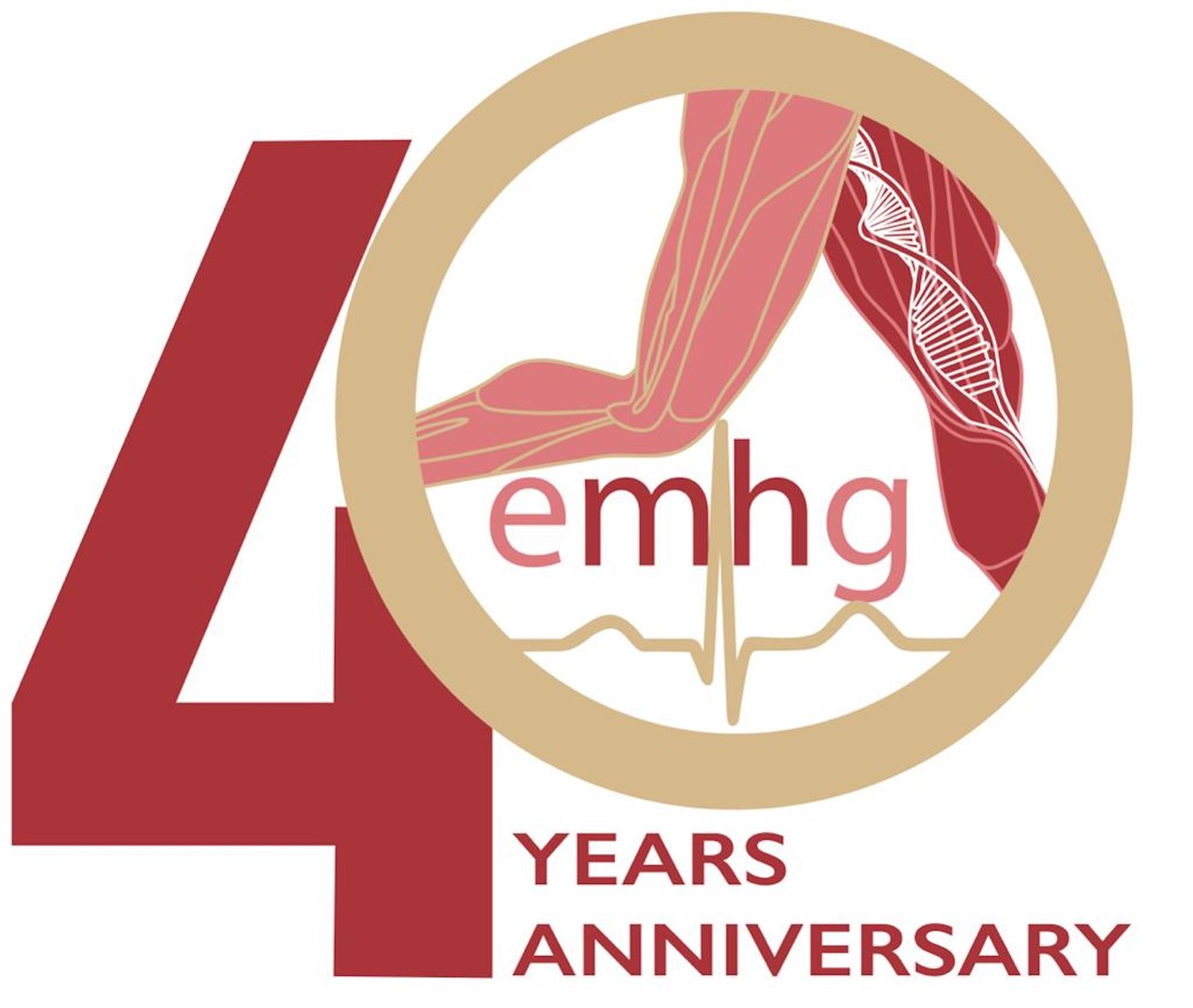Criteria for the determination of gene variants as unlikely to cause malignant hyperthermia susceptibility
The gold standard for predictive testing for malignant hyperthermia is an in-vitrocontracture test (IVCT). However, genetic testing is much faster, easier and less burdensome for the patients and family members. The European Malignant Hyperthermia Group (EMHG) has adopted criteria for the use of gene variants (mutations) only in predictive testing. These criteria are co-segregation of the variant with malignant hyperthermia (susceptibility) and functional evidence from an established test model. A list of causative variants is available from the EMHG website.
Since genetic testing is increasingly popular, causative and non-causative variants in genes related to malignant hyperthermia susceptibility are detected frequently. These may include unsolicited findings from panel, exome, or genome sequencing, or targeted sequencing of the involved gene because of a muscle disease (i.e. RYR1testing in core myopathies). Thus, also in families without a history of malignant hyperthermia, such gene variants will be detected. A vast number of these gene variants are likely not causing malignant hyperthermia. However, due to the increased a priorilikelihood of families with a gene variant of uncertain pathogenicity to actually have malignant hyperthermia susceptibility, an IVCT is often performed. This is burdensome, and also put strains on the capacity of the IVCT laboratories. To avoid replication of testing of patients with the same variants in multiple centers, there is a need of criteria for the determination of gene variants as unlikely to cause malignant hyperthermia, as well as a list of ‘likely non-causative variants’ at the EMHG website.
The EMHG has consented on a scoring matrix for classification of pathogenicity of genetic variants in malignant hyperthermia susceptibility
Criteria for the determination of gene variants as unlikely to cause malignant hyperthermia
1. Population frequency > 1:1,000.
Malignant hyperthermia shows incomplete penetrance, i.e. not all individuals having a causative variant will develop malignant hyperthermia, nor will all individuals with such variants develop malignant hyperthermia at their first anesthetic encounter. Malignant hyperthermia has an estimated incidence of 1:10,000 anesthetics in children and 1:50,000 in adults (Rosenberg et al. 2003 Genereviews). This difference is probably due to increased penetrance in children, rather than a difference in genetic predisposition. Additionally, the penetrance may vary from one variant to the other, indicated by different dose-response curves for groups of individuals carrying different variants (Carpenter 2009 Br J Anaesth 103:538-48). Thus, the proportion of individuals having a causative variant will be higher than the incidence of malignant hyperthermia. The prevalence of causative variants in the French and Japanese populations was estimated to be around 1:2,000 to 1:3,000 (Monnier 2002 Anesthesiology 97:1067-74 and Ibarra 2006 Anesthesiology 104:1146–54). Additionally, exome sequencing data of >60,000 individuals revealed a relative high prevalence (~1:2500 Europeans) of the common causative variant, Arg614Cys (ExAC database; Lek 2016 Nature 536; 285–291). This indicates that the penetrance of malignant hyperthermia for this variant only is <25% in children (2,500/10,000), and <5% in adults (2,500/50,000). This calculation is based on the assumption that the prevalence of this variant is not different in individuals receiving anesthetics compared to controls, and simplified by assuming that the Arg614Cys variant is the only variant causing malignant hyperthermia. Thus, in reality, the penetrance for this variant will be much lower.
To use a population frequency to determine whether a given variant is unlikely to be causative, a few assumptions need to be made: 1). a variant with a penetrance of <1% in children (since their penetrance of malignant hyperthermia is higher) is considered to be a modifier rather than a causative variant. 2). Since the most common causative variants have been revealed already, a new variant is not likely to contribute to >10% of malignant hyperthermia cases. A simple calculation would be: population frequency is incidence divided by penetrance, times contribution. That would be (0.0001 / 0.01) *0.1 =0.001. This suggests that, with the roughly calculated risks and the assumptions given above, any variant with a frequency of >1:1000 is very unlikely to cause malignant hyperthermia.
2. Two independent MHN RYR1 variant carriers
The strongest evidence to determine that a gene variant is not associated with malignant hyperthermia, would be a negative IVCT (MHN) in individuals with the variant. However, to account for false-negative results, or putative modifying genetic factors, testing in a single individual/family would not be sufficient. Thus, a negative IVCT from two unrelated individuals with the same gene variant should be sufficient to call a variant ‘unlikely to cause malignant hyperthermia’. It is of importance that the description of the variant is unequivocal, i.e. genomic (with genome built), coding DNA (with refseq), and protein nomenclature.
How to use the list of ‘variants unlikely to cause malignant hyperthermia’
Once a variant has been established to be unlikely to cause malignant hyperthermia, based on the frequency and / or malignant hyperthermia negative testing of two unrelated individuals with the respective variant, the EMHG proposes the following:
In families with a history of malignant hyperthermia and a variant from the list of ‘unlikely-causative variants’, the IVCT remains the gold standard.
In families with nohistory of malignant hyperthermia and a variant from this list, the family risk of malignant hyperthermia has been reduced to the risk of the general population. No IVCT testing is needed in those individuals or their family members.

